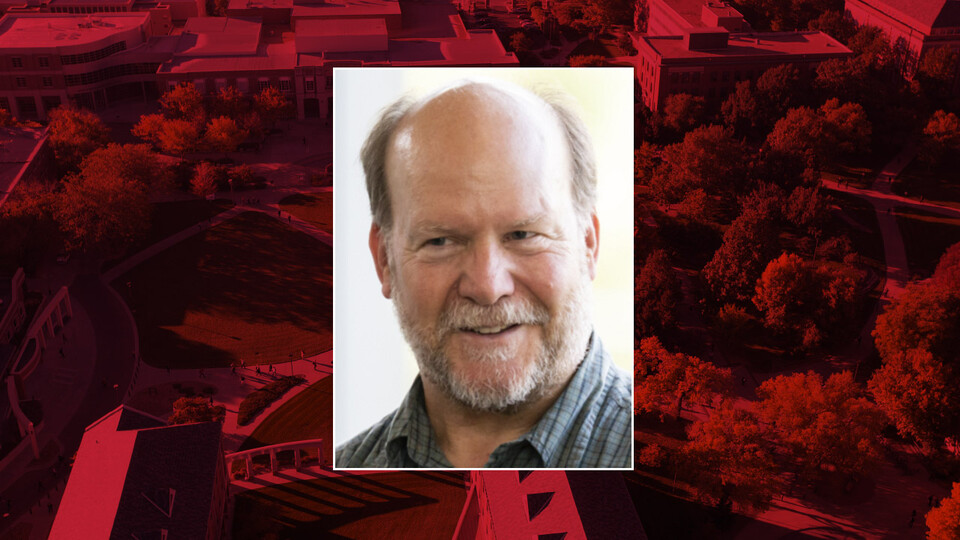
Nebraska scientist says time is running out for West Antarctic Ice Sheet
by Leslie Reed | University Communication
For more than 30 years, David Harwood, professor in the Department of Earth and Atmospheric Sciences at the University of Nebraska-Lincoln, has been a leading scientist investigating how global temperature change affected Antarctic ecosystems and the stability of the large southern ice sheets over millions of years in the ancient past. He and other Nebraska scientists, engineers, drillers and students have helped lead international efforts using drills to retrieve water samples, ice and sediment cores to understand Antarctica’s past climate and what it portends for the future as the world warms in the coming decades. In this Q&A, he discusses his work in light of the recent United Nations’ Conference of the Parties (COP26) in Glasgow on climate change. Opinions expressed in the following Q&A are Harwood’s own.
How has your research of the ancient past in Antarctica informed current understanding of what is happening with climate change?
The past is indeed a guide to our future. The Antarctic research by my colleagues and me has increased our understanding of the rates and size of future changes in the Antarctic Ice Sheet, which will raise global sea level. The recovery and study of sediment drill cores around the margins of Antarctica provides a history of changes in the ice sheet and climate during past times when atmospheric carbon dioxide was at today’s levels, and where it is expected to rise toward the end of this century. Our climate and ice sheet prediction models have been repeatedly tested against historical records revealed in the sediment cores. As the models become better at “back-casting,” they become much better at forecasting future changes. For example, the last time carbon dioxide levels were where they are today, at more than 415 parts per million, was 4 million years ago, and the result of the associated warming due to greenhouse gas was melting of the West Antarctic Ice Sheet and several meters of sea level rise. Unless we can bring our present atmospheric carbon dioxide level down, the eventual outcome will again be substantial loss of ice and open seas across West Antarctica. The models help us see how, and how fast, the ice sheet will respond, so that policymakers can work toward mitigation and required adaptations.
If the goals of COP26 are reached, will it be enough to prevent Antarctica’s ice sheets from irretrievably melting?
Antarctic glaciers are melting in specific regions of West Antarctica in a mode that can’t be stopped. Ocean heat and the reverse slope of the marine continental shelf beneath the Thwaites Glacier, for example, is a runaway train, and large volumes of ice of the West Antarctic Ice Sheet will continue to enter the sea through this outlet. Both model results and satellite observation of this glacial system conclude the same eventual outcome of substantial ice loss in this sector. Scientists from the United Kingdom and the United States are working together in this region to better understand the processes involved, to determine the rate and timing of changes, but this glacial system is in full-scale retreat. Steps taken to meet the goals of the Paris Agreement and COP26 would slow the rates of change in other sectors of the Antarctic Ice Sheet. COP26 policymakers are advised well by the recent Sixth Assessment Report of the Intergovernmental Panel on Climate Change (IPCC), which presents what the global community of scientists and analysts understands. In contrast to previous assessment reports, the recent AR6 now uses expressions “unequivocal,” “high-confidence,” “extremely likely,” in describing what scientists know about the causes and impacts of climate change.
Are you hopeful that the conference can result in change?
I am hopeful that the conference can result in the changes we need, but we don’t have a lot of time. Some indices show promising responses to steps that have been taken, and things are slowing. However, much more is needed. One of the most positive outcomes that will come from COP26 is that those entities that are making changes and having positive results can talk with each other and support progress toward common goals. The targets and commitments of the Paris Agreement of six years ago require clear affirmation. There are clear inequities in who will be impacted by climate change, and these are topics that were discussed in the global forum. This is not a scientific problem anymore; the science is clear. What we know is scary, and we are overdue for deliberate actions to reverse course. What we don’t understand is probably even more scary, as we accelerate into the unknown. COP26 was about political choices, what we are willing to risk and what we are willing to spend.
How important is it that nations enact the Paris Agreement?
Some nations have aligned well with their target levels identified six years ago, but most are behind. It is vitally important that we continue to slow, and hopefully reverse, the rate of emissions. The United States lost critical time and global leadership when the world could least afford it, in the time between the Paris Agreement and COP26. The recent international assembly of most world leaders provided an opportunity for nations to reaffirm their positions and realign national commitment levels to remedy the climate crisis. We have stepped past the point where mitigation alone will solve this issue. At COP26, there were clear discussions about the cost of adapting to changes that have already occurred. We can’t go back to where we were, and there will be consequences and costs, all of which were on the table in Glasgow. I hope when leaders return home, their discussions will lead to clear and sustained actions and investment from many fronts; and that innovation and shifts in practice to slow the rate of change will continue in earnest.